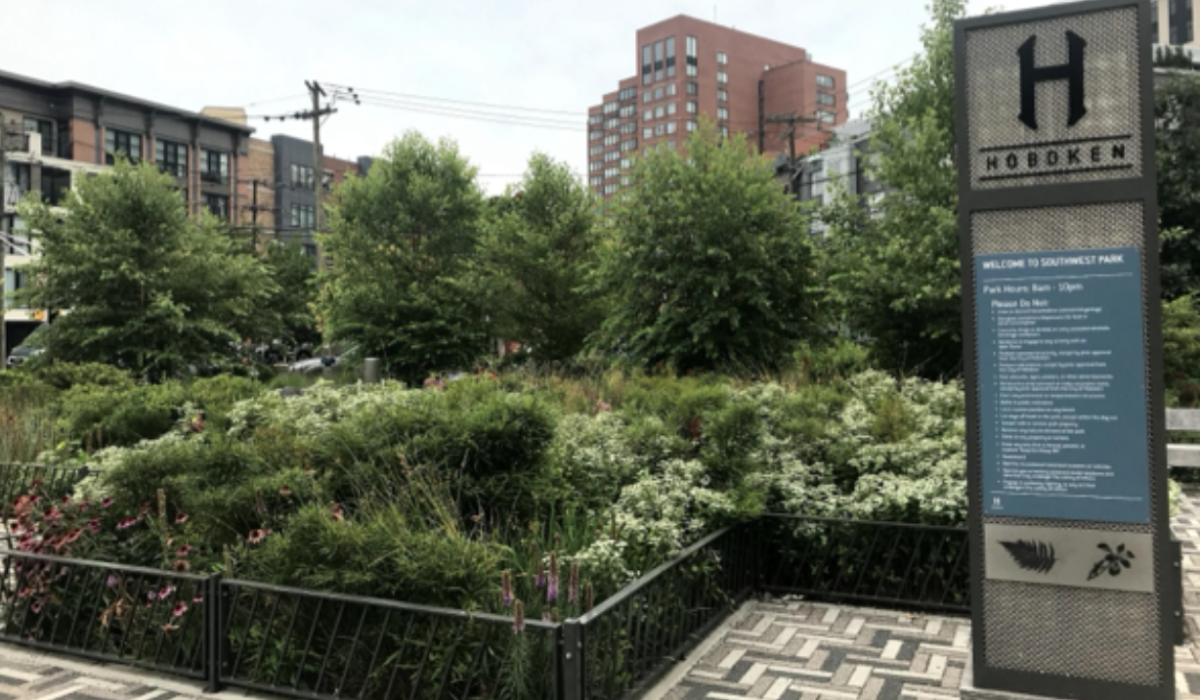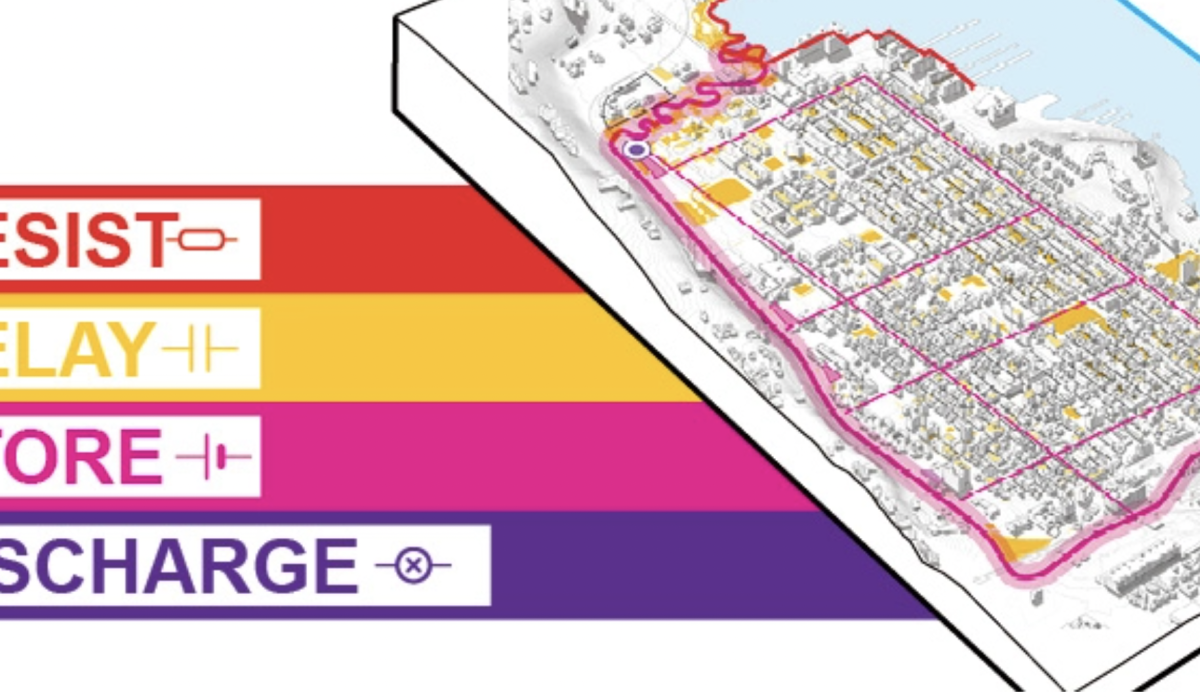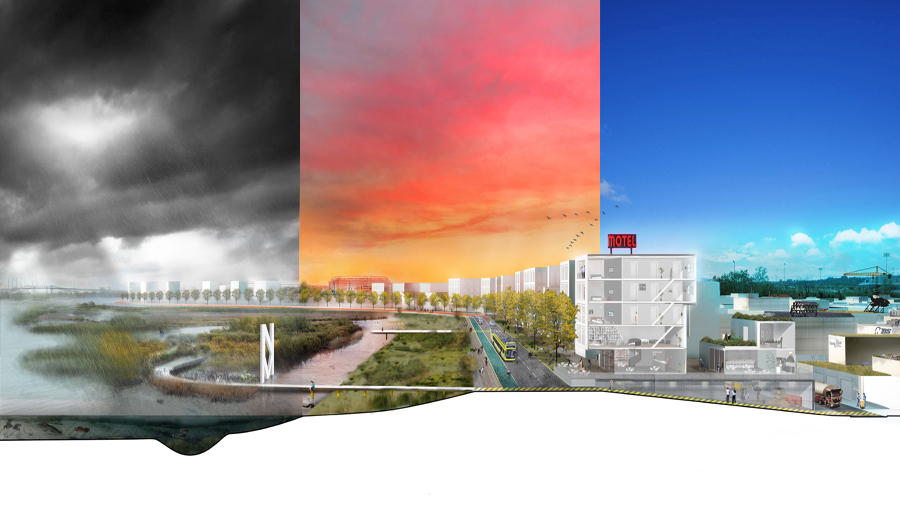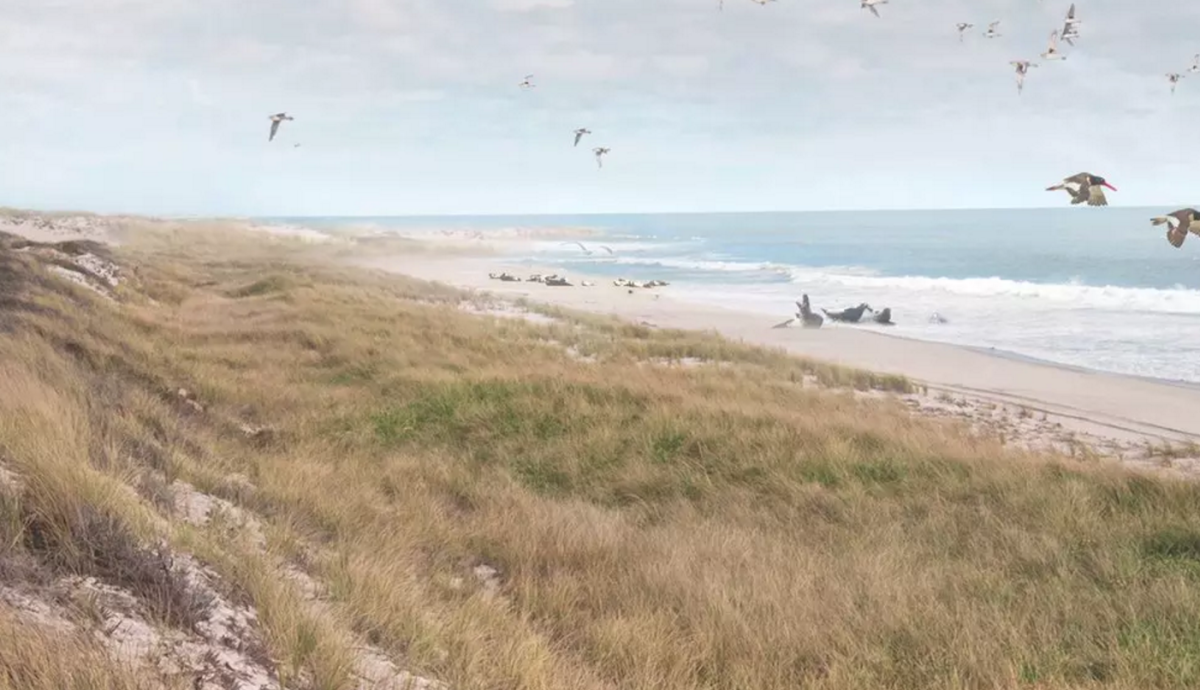Impacts of the remnants of Tropical Storm Ida in Bergen County, NJ. Source: Alexander Lewis, September 2021.
READ THE NEW Jersey: Atlas of Disaster (2011-2024)
New Jersey residents are grappling with the impacts of more frequent and more severe floods, high tides, extreme heat, and wildfires. Extreme weather effects reach across political, socioeconomic, and geographical boundaries. These impacts have led to loss of power, homes, land, property, livelihoods, income – and in the most severe instances, loss of life.
According to Rebuild by Design’s Atlas of Disaster, from 2011-2024 the state of New Jersey had 14 climate disasters, leaving each county with at least five disasters. These disasters cost taxpayers more than $7.9 billion dollars, ranking New Jersey as the state with the fifth highest per capita spending on climate disasters in the nation.
About 70 percent of the New Jersey properties have repeatedly flooded and been repaired five or more times. The same amount of properties have been rebuilt at taxpayers’ expense, with the median payment for each flood claim topping $25,000.
The risk continues to grow. Climate scientists have projected a reality where Ocean City is underwater, frequent heat waves occur in Newark, and the Meadowlands are “swamped,” putting some of New Jersey’s most critical infrastructure at risk as soon as 2040. By 2045, projections indicate that more than 62,000 New Jersey homes – valued at $26.8 billion – could be underwater, displacing nearly 80,000 people. We cannot wait any longer to protect the lives and livelihoods of New Jersey residents.
To ensure a livable future, it is crucial that the State of New Jersey secures sustainable, long-term funding for climate adaptation infrastructure. Residents of New Jersey are demanding proactive and comprehensive climate adaptation strategies to ensure that increases in the frequency of severe weather need not lead to increases in destruction.
MEASURING IMPACT
14 Major disasters
due to extreme weather events between 2011-2024. Every single county experienced at least six recent disasters.
$7.9 Billion
received in federal post-disaster assistance from FEMA’s hazard mitigation (HM) and public assistance (PA) programs, as well as HUD’s community development block grant – disaster recovery program (CDBG-DR).
$854 per capita
in federal post-disaster assistance from FEMA’s HM and PA programs, as well as HUD’s CDBG-DR program between 2011-2024.
MORRIS COUNTY
has experienced the highest number of recent disaster declarations with a total of nine federally declared disasters between 2011-2024.
BERGEN COUNTY
received the highest amount of federal post-disaster assistance from FEMA’s HM and PA programs, as well as HUD’s CDBG-DR program between 2011-2021.
$9.1 BILLION
in funding for climate infrastructure could be supported through a surcharge on property and casualty insurance.
The report proposes three funding opportunities for New Jersey
1. Statewide ballot measure asking for resilience and climate-related investments, a method that voters around the country have overwhelmingly supported.
2. Modest two-percent surcharge on certain types of Property and Casualty Insurance that could support $9.1 billion in climate infrastructure investments over 10 years.
3. State-level “Superfund” to hold oil and gas companies responsible as four other states have already modeled.
To join us in advocating for funding sources for New Jersey’s infrastructure, email info@rebuildbydesign.org
EXPLORE REBUILD BY DESIGN's work in new jersey
Event: Learn about Hoboken’s innovative approach and comprehensive strategy to tackling the challenges of heavy rainfall, with Caleb Stratton, Assistant Business Administrator & Chief Resilience Officer for the City of Hoboken. Watch the event here >>
BUILDING REGIONAL EXPERTISE: NY-NJ USACE HATS TEACH-IN
Designing a teach-in: Rebuild hosted a flood infrastructure teach-in to better understand the US Army Corps of Engineers’ proposed plan for flood protection in the New York and New Jersey Harbor and Tributaries. Learn more>>
Hurricane Sandy Rebuild by Design Competition. This project is a multifaceted approach to managing stormwater from flooding and surge along the Hudson River. It explores using hard infrastructure and soft landscape—including permeable paving, rain gardens, and rainwater storage—for coastal defense. Learn more>>
Hurricane Sandy Rebuild by Design Competition. The low-lying Meadowlands, a flood-prone area located across the Hudson River from New York City, is home to critical power, wastewater treatment, and transportation infrastructure for the region. Interventions here need to address the combined effects of flooding, heat islands, pollution, social vulnerability, and vital network protection. Learn more>>
Hurricane Sandy Rebuild by Design Competition. These research and design strategies focus on the value of “the beach,” a place of special significance to memory, state and local economies, and a vital component of coastal ecosystems. New Jersey’s northern shore includes the three coastal typologies found across the eastern seaboard of the United States: Barrier Island, Headlands, and Inland Bay. Learn more>>
Hurricane Sandy Rebuild by Design Competition. A finalist proposal to create an offshore barrier island chain centered on the NY/NJ harbor is called “The Blue Dunes” – blue indicating their position in the open ocean, and dunes for the natural landforms they mimic. Learn more>>





